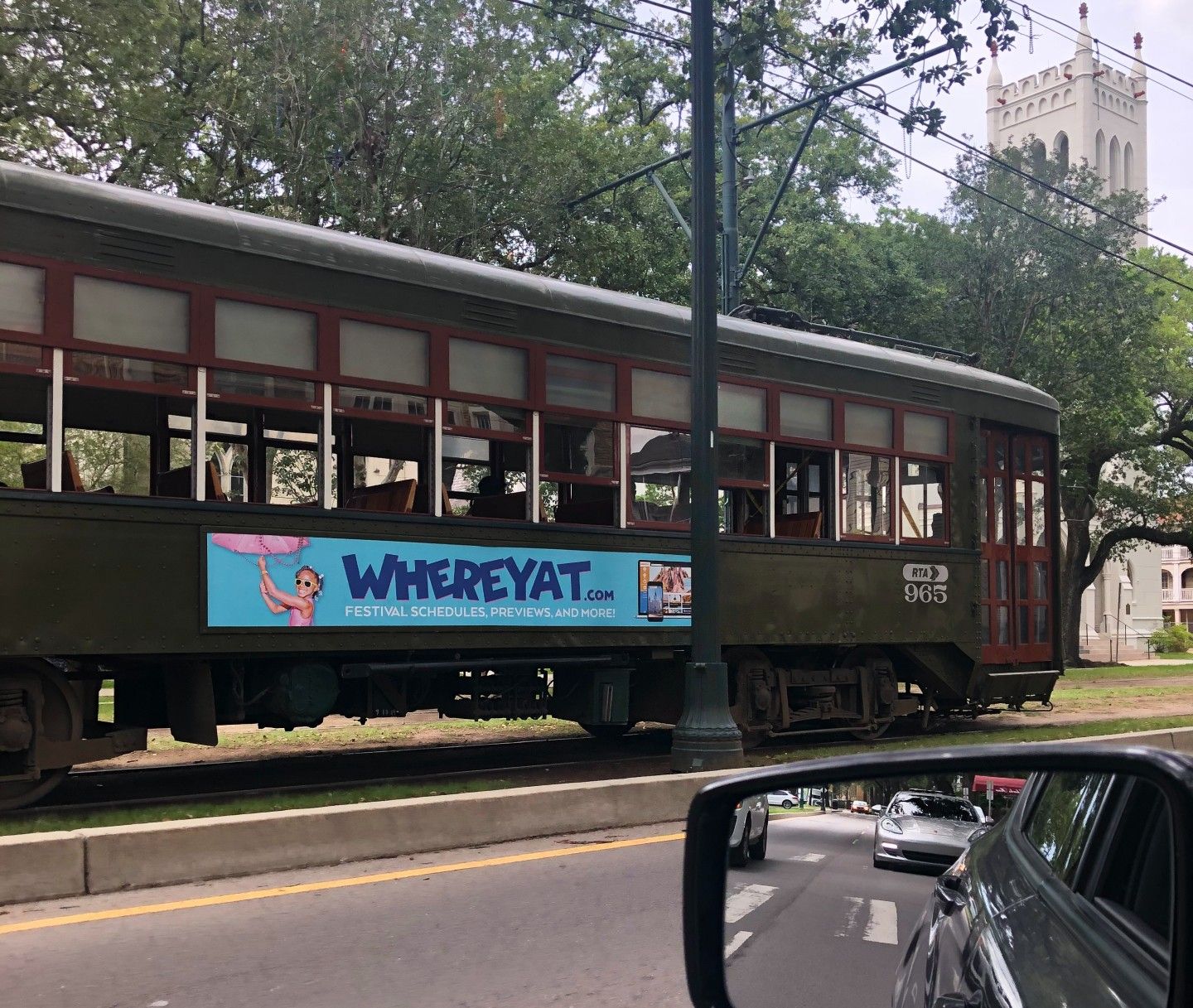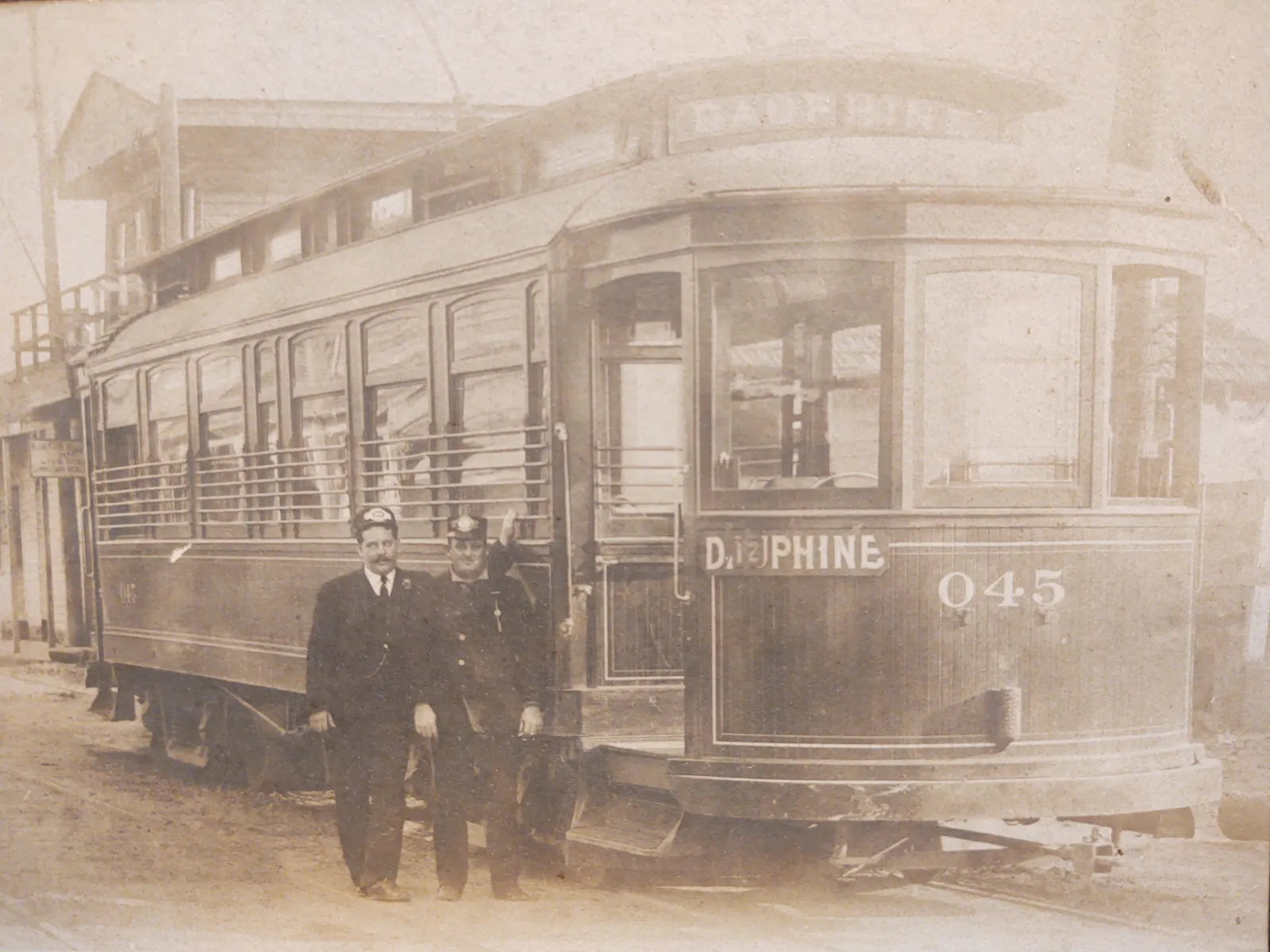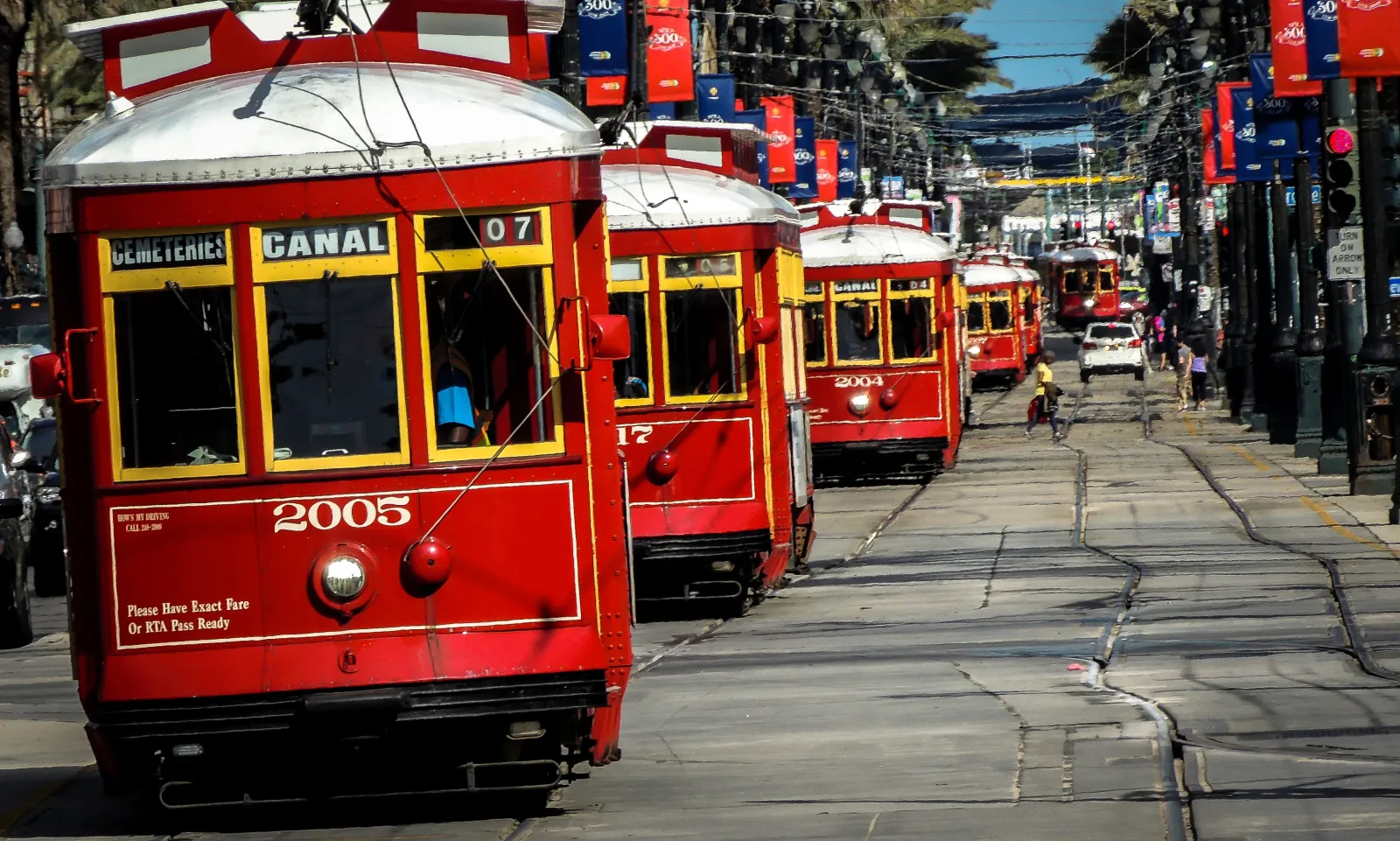
You're in your car going down St. Charles Avenue. The sun is shining through the leaves on the live oak trees that flank the thoroughfare. Maybe you're going to Superior Grill for lunch, commuting to Loyola for classes, or just cruising to some jazz on WWOZ. As you're driving, the St. Charles Avenue Streetcar comes from up behind on your left side, packed with locals and tourists. As you see it rumbling past, you might think nothing of it. You've seen that dark green streetcar so many times, it just seems to blend into the avenue's beautiful scenery. In your mind, that streetcar is part of what completes your mental image of "New Orleans."
New Orleans's streetcars, or trolleys if you're from out-of-town, have been an important part of the city's public transit system since all the way back in the 1830s. In particular, the St. Charles Streetcar line has the distinction of being the oldest continuously functioning streetcar line in the entire world (since 1835) and is a registered National Historic Landmark. Currently, the city has five lines that are managed by the New Orleans Regional Transit Authority: the St. Charles line, two branches of the Canal line (one heading to Metairie Road and the other towards Bayou St. John), the Riverfront line, and the Rampart-St. Claude line.
According to the book The Streetcars of New Orleans by Louis Hennick and Harper Charlton, the first rail service to appear in the Greater New Orleans area was in 1831 when the Pontchartrain Railroad Company created a five-mile line along Elysian Fields Avenue toward Lake Pontchartrain. The original cars on this line, plus many other lines that opened in the city, were pulled by horses until they were eventually replaced with steam engine cars starting in 1832. When the New Orleans and Carrollton line was completed and opened in 1834, New Orleans became the second city in the world to have a proper and working street railway (the first being New York City). By the late 1800s, six separate streetcar companies were servicing a multitude different lines around the city.

As New Orleans continued to expand and urbanize, steam powered streetcars were eventually replaced with electric powered ones in 1893 and the six companies started consolidating into one privately-owned company, going by many names like the New Orleans Traction Co., the New Orleans Railways Co., and New Orleans Public Service Incorporated. Importantly, according to RailwayPreservation.com, 1923 was when the 900 Series Perley A. Thomas Car Works streetcars (aka the green streetcars that the St. Charles line still uses) were first introduced to the city. From the 19th to 20th centuries, New Orleans had 235 miles of track and more than 20 streetcar lines shipping residents all over the city like the Napoleon line, the Esplanade line, and the Desire line (made famous by Tennessee William's most popular play A Streetcar Named Desire) My great-great-grandfather, Peter Jacob Weitzel, actually operated the streetcar on Dauphine Street for the New Orleans Railway and Light Co. until his death in 1905.
The streetcars were actually at the center of some major social changes in the city. In 1867, two years after the Civil War, an African American man named William Nichols was forced out of a white-only streetcar, which caused mass protests in the New Orleans. It was then decided that the streetcars would become integrated in order to avoid any violence the city had previously seen because of the war. This decision lasted until 1902 when the Louisiana legislature enforced racial segregation again, which itself didn't get over turned until 1958.
There were also a number of labor strikes associated with the streetcars. Probably the most famous one was the strike of 1929, where employees of the Amalgamated Association of Electric Street Railway, Division 194, went on strike for four months and left over a thousand union streetcar workers without any income. Moved by this, the owners of Martin Brothers' Coffee Stand and Restaurant would give these workers free baguette sandwiches during the strike. Supposedly, anytime a worker would enter their restaurant, the owners would yell, "Here comes another poor boy!" Thus, New Orleans's first po-boys were born.
The heyday of New Orleans's, as well as America's, streetcars slowly started to fade in the early to mid-20th century when bus services became more popular. Really beginning at the end of World War II, this shift in focus with public transportation resulted in most of the city's streetcar lines being discontinued or abandoned beginning in the 1930s to the late 1950s. Even the Canal line that locals are used to nowadays switched to bus service back in 1964. The St. Charles line was the only line that was able to escape this great streetcar purge.

The age of streetcars in New Orleans was looking gloom until 1979 with the creation of the New Orleans Regional Transit Authority (or RTA, as locals know it by). This is the change that turned everything around. Working as a public body, and with the help of tax money and federal funding, RTA was able to create the Riverfront line in 1988 and reopen the Canal line in 2004 with newer, more comfortable red streetcars. Things looked dire in 2005, however, when Hurricane Katrina hit the city. While many of the city's tracks and the new red streetcars were damaged, the St. Charles green cars made it through unscathed and were used on the available tracks as repairs were being done to the city in the following years.
It's this resilience that helps make New Orleans's streetcars so iconic. They have survived through strikes, natural disasters, and, hardest of all, innovation and modernization. These cars are just like the New Orleanians that they transport every single day. No matter what happens to them, they keep carrying on, full of color and grace.

